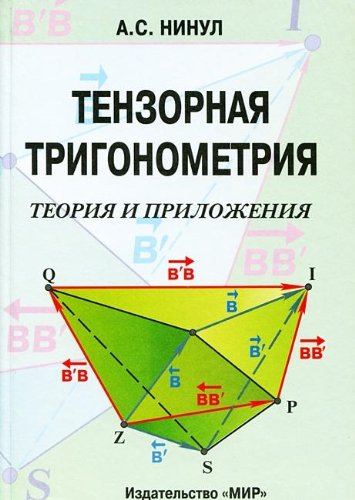
Tensor Trigonometry
by A.S. Ninul
Publisher: FIZMATLIT 2021
ISBN/ASIN: 5940522785
ISBN-13: 9785940522782
Number of pages: 320
Description:
The tensor trigonometry is development of the flat scalar trigonometry from Leonard Euler classic forms into general multi-dimensional tensor forms with vector and scalar orthoprojections and with step by step increasing complexity and opportunities. Described in the book are fundamentals of this new mathematical subject with many initial examples of its applications.
Download or read it online for free here:
Read online
(online reading)
Similar books
 Tensor Analysis
Tensor Analysisby Edward Nelson - Princeton Univ Pr
The lecture notes for the first part of a one-term course on differential geometry given at Princeton in the spring of 1967. They are an expository account of the formal algebraic aspects of tensor analysis using both modern and classical notations.
(20534 views)
 Tensor Calculus
Tensor Calculusby Taha Sochi - viXra
These notes are the second part of the tensor calculus documents. In this text we continue the discussion of selected topics of the subject at a higher level expanding, when necessary, some topics and developing further concepts and techniques.
(10122 views)
 Introduction to Vectors and Tensors Volume 1: Linear and Multilinear Algebra
Introduction to Vectors and Tensors Volume 1: Linear and Multilinear Algebraby Ray M. Bowen, C.-C.Wang - Springer
This book presents the basics of vector and tensor analysis for science and engineering students. Volume 1 covers algebraic structures and a modern introduction to the algebra of vectors and tensors. Clear presentation of mathematical concepts.
(19876 views)
 An Introduction to Tensors for Students of Physics and Engineering
An Introduction to Tensors for Students of Physics and Engineeringby Joseph C. Kolecki - Glenn Research Center
The book should serve as a bridge to the place where most texts on tensor analysis begin. A semi-intuitive approach to those notions underlying tensor analysis is given via scalars, vectors, dyads, triads, and similar higher-order vector products.
(9974 views)